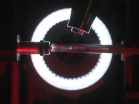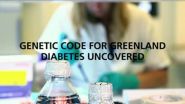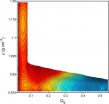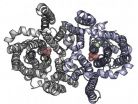(Press-News.org) Scientists at the University of East Anglia have made a breakthrough in the race to solve antibiotic resistance.
New research published today in the journal Nature reveals an Achilles' heel in the defensive barrier which surrounds drug-resistant bacterial cells.
The findings pave the way for a new wave of drugs that kill superbugs by bringing down their defensive walls rather than attacking the bacteria itself. It means that in future, bacteria may not develop drug-resistance at all.
The discovery doesn't come a moment too soon. The World Health Organization has warned that antibiotic-resistance in bacteria is spreading globally, causing severe consequences. And even common infections which have been treatable for decades can once again kill.
Researchers investigated a class of bacteria called 'Gram-negative bacteria' which is particularly resistant to antibiotics because of its cells' impermeable lipid-based outer membrane.
This outer membrane acts as a defensive barrier against attacks from the human immune system and antibiotic drugs. It allows the pathogenic bacteria to survive, but removing this barrier causes the bacteria to become more vulnerable and die.
Until now little has been known about exactly how the defensive barrier is built. The new findings reveal how bacterial cells transport the barrier building blocks (called lipopolysaccharides) to the outer surface.
Group leader Prof Changjiang Dong, from UEA's Norwich Medical School, said: "We have identified the path and gate used by the bacteria to transport the barrier building blocks to the outer surface. Importantly, we have demonstrated that the bacteria would die if the gate is locked."
"This is really important because drug-resistant bacteria is a global health problem. Many current antibiotics are becoming useless, causing hundreds of thousands of deaths each year.
"The number of super-bugs are increasing at an unexpected rate. This research provides the platform for urgently-needed new generation drugs."
Lead author PhD student Haohao Dong said: "The really exciting thing about this research is that new drugs will specifically target the protective barrier around the bacteria, rather than the bacteria itself.
"Because new drugs will not need to enter the bacteria itself, we hope that the bacteria will not be able to develop drug resistance in future."
INFORMATION:
This research was funded by Wellcome Trust. Research collaborators included Dr Neil Paterson of Diamond Light Source (UK), Dr Phillip Stansfield from the University of Oxford, and Prof Wenjan Wang of Sun Yat-sen University (China).
'Structural basis for outer membrane lipopolysaccharide insertion' is published in the journal Nature on June 18, 2014.
UEA researchers discover Achilles' heel in antibiotic-resistant bacteria
2014-06-18
ELSE PRESS RELEASES FROM THIS DATE:
Identifying opposite patterns of climate change between the middle latitude areas
2014-06-18
Korean research team revealed conflicting climate change patterns between the middle latitude areas of the Northern and Southern Hemispheres in relation to glacial and interglacial cycles which have been puzzled for the past 60 years.
Doctor Kyoung-nam Jo from the Quaternary Geology Department of the Korea Institute of Geoscience and Mineral Resources(KIGAM) revealed a clue for solving the riddle of past global climate change in his paper titled 'Mid-latitudinal interhemispheric hydrologic seesaw over the past 550,000 years' which was featured in the journal Nature.
This ...
Evolutionary biology: Why cattle only have 2 toes
2014-06-18
During evolutionary diversification of vertebrate limbs, the number of toes in even-toed ungulates such as cattle and pigs was reduced and transformed into paired hooves. Scientists at the University of Basel have identified a gene regulatory switch that was key to evolutionary adaption of limbs in ungulates. The study provides fascinating insights into the molecular history of evolution and is published by Nature today.
The fossil record shows that the first primitive even-toed ungulates had legs with five toes (=digits), just like modern mice and humans. During their ...
Scientists break the genetic code for diabetes in Greenland
2014-06-18
VIDEO:
New Danish genetics research explains the high incidence of type 2 diabetes in the Greenlandic population. The ground-breaking findings have just been published in the prestigious scientific journal Nature....
Click here for more information.
A spectacular piece of detective work has mapped a special gene variant among Greenlanders which plays a particularly important role in the development of type 2 diabetes. The results have been published in Nature and can be ...
Familiar yet strange: Water's 'split personality' revealed by computer model
2014-06-18
Seemingly ordinary, water has quite puzzling behavior. Why, for example, does ice float when most liquids crystallize into dense solids that sink?
Using a computer model to explore water as it freezes, a team at Princeton University has found that water's weird behaviors may arise from a sort of split personality: at very cold temperatures and above a certain pressure, water may spontaneously split into two liquid forms.
The team's findings were reported in the journal Nature.
"Our results suggest that at low enough temperatures water can coexist as two different ...
Collecting light with artificial moth eyes
2014-06-18
Rust – iron oxide – could revolutionise solar cell technology. This usually unwanted substance can be used to make photoelectrodes which split water and generate hydrogen. Sunlight is thereby directly converted into valuable fuel rather than first being used to generate electricity. Unfortunately, as a raw material iron oxide has its limitations. Although it is unbelievably cheap and absorbs light in exactly the wavelength region where the sun emits the most energy, it conducts electricity very poorly and must therefore be used in the form of an extremely thin film in ...
Breathalyzer test may detect deadliest cancer
2014-06-18
Lung cancer causes more deaths in the U.S. than the next three most common cancers combined (colon, breast, and pancreatic). The reason for the striking mortality rate is simple: poor detection. Lung cancer attacks without leaving any fingerprints, quietly afflicting its victims and metastasizing uncontrollably – to the point of no return.
Now a new device developed by a team of Israeli, American, and British cancer researchers may turn the tide by both accurately detecting lung cancer and identifying its stage of progression. The breathalyzer test, embedded with a "NaNose" ...
Scripps Research Institute scientists reveal molecular 'yin-yang' of blood vessel growth
2014-06-18
LA JOLLA, CA—June 18, 2014 —Biologists at The Scripps Research Institute (TSRI) have discovered a crucial process that regulates the development of blood vessels. The finding could lead to new treatments for disorders involving abnormal blood vessel growth, including common disorders such as diabetic retinopathy and cancer.
"Essentially we've shown how the protein SerRS acts as a brake on new blood vessel growth and pairs with the growth-promoting transcription factor c-Myc to bring about proper vascular development," said TSRI Professor Xiang-Lei Yang. "They act as the ...
Inflammation in fat tissue helps prevent metabolic disease
2014-06-18
DALLAS – June 18, 2014 – Chronic tissue inflammation is typically associated with obesity and metabolic disease, but new research from UT Southwestern Medical Center now finds that a level of "healthy" inflammation is necessary to prevent metabolic diseases, such as fatty liver.
"There is such a thing as 'healthy' inflammation, meaning inflammation that allows the tissue to grow and has overall benefits to the tissue itself and the whole body," said Dr. Philipp Scherer, Director of the Touchstone Center for Diabetes Research and Professor of Internal Medicine and Cell ...
Unlocking the therapeutic potential of SLC13 transporters
2014-06-18
Researchers have provided the first functional analysis of a member of a family of transporter proteins implicated in diabetes, obesity, and lifespan. The study appears in the June issue of The Journal of General Physiology.
Members of the SLC13 transporter family play a key role in the regulation of fat storage, insulin resistance, and other processes. Some SLC13 transporters mediate the transport of Krebs cycle intermediates—compounds essential for the body's metabolic activity—across the cell membrane. Previous studies have shown that loss of one member of this family ...
Penn team links placental marker of prenatal stress to brain mitochondrial dysfunction
2014-06-18
When a woman experiences a stressful event early in pregnancy, the risk of her child developing autism spectrum disorders or schizophrenia increases. Yet how maternal stress is transmitted to the brain of the developing fetus, leading to these problems in neurodevelopment, is poorly understood.
New findings by University of Pennsylvania School of Veterinary Medicine scientists suggest that an enzyme found in the placenta is likely playing an important role. This enzyme, O-linked-N-acetylglucosamine transferase, or OGT, translates maternal stress into a reprogramming ...







